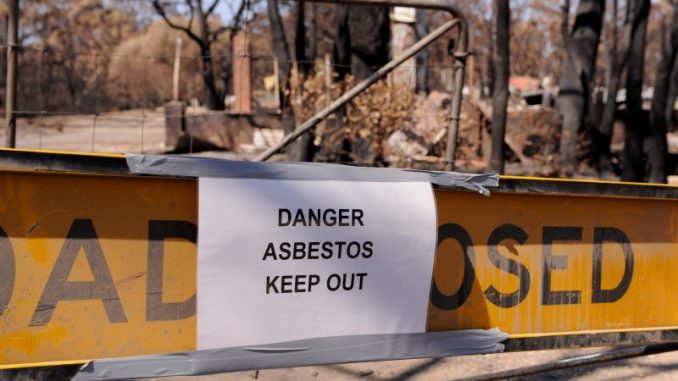

OAN’s Elizabeth Volberding
12:25 PM – Monday, March 18, 2024
The United States Environmental Protection Agency (EPA) announced that it is taking a “historic” move in outlawing any further use of asbestos, which has long been connected to many types of cancer.
Advertisement
With the continued use of asbestos being banned, the U.S. Environmental Protection Agency said on Monday that it is making a “historic” move, after the chemical has long been linked to several cancers.
Chrysotile asbestos is the only kind of asbestos that is currently being used or imported into the United States, and this final decision exclusively applies to it.
This form of asbestos is used in auto parts, including gaskets, friction products, aftermarket brakes, and linings. In addition, asbestos is a carcinogen still found in some chlorine bleach, brake pads, and other items. However, researchers say that asbestos kills tens of thousands of Americans a year.
The EPA also stated that asbestos exposure is responsible for over 40,000 deaths in the U.S., despite the fact that asbestos use has been decreasing for decades in the country. Studies have shown that asbestos exposure increases the risk of developing lung cancer, mesothelioma, ovarian cancer, and laryngeal cancer.
The EPA welcomed the shift and called it a “major milestone” for chemical safety “after more than three decades of inadequate protections and serious delays during the previous administration.”
“The science is clear – asbestos is a known carcinogen that has severe impacts on public health. President Biden understands that this concern that has spanned generations and impacted the lives of countless people. That’s why EPA is so proud to finalize this long-needed ban on ongoing uses of asbestos,” EPA Administrator Michael S. Regan declared in a statement.
The EPA administrator also referred to the decision as a huge step in protecting the health of the public.
“With today’s ban, EPA is finally slamming the door on a chemical so dangerous that it has been banned in over 50 countries,” Regan said. ”This historic ban is more than 30 years in the making, and it’s thanks to amendments that Congress made in 2016 to fix the Toxic Substances Control Act.”
The decision represents a significant increase in EPA regulation under a historic 2016 law that rewrote rules pertaining to tens of thousands of hazardous chemicals included in common products, such as furniture and home cleaning products.
Tens of thousands of hazardous chemicals that are included in common products have new regulations approved by the 2016 law. These compounds include asbestos and trichloroethylene, which have been known to cause cancer for decades but were mainly unregulated by federal law.
The Toxic Substances Control Act (TSCA), a 1976 statute that had remained unaltered for 40 years, was to be updated and clarified by the Frank Lautenberg Chemical Safety Act, a patchwork of state laws managing chemicals.
The EPA outlawed asbestos in 1989, but a 1991 Court of Appeals ruling substantially obstructed the agency’s ability to enforce the TSCA and address hazards to public health posed by asbestos and other chemicals. The 2016 law mandated the EPA to assess chemicals and put in place protections against “unexplainable threats.”
Asbestos is now banned in over 50 countries and has been decreasing in the U.S. for many years. Chrysotile asbestos, mostly imported from Brazil and Russia, is the only kind of asbestos that was known to be imported, processed, or distributed for use in the U.S. in recent years.
Stay informed! Receive breaking news blasts directly to your inbox for free. Subscribe here. https://www.oann.com/alerts
